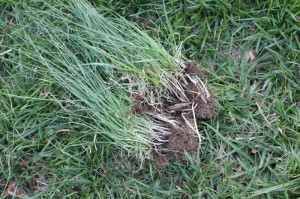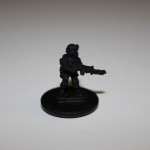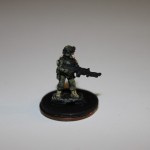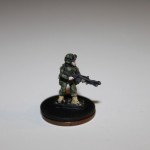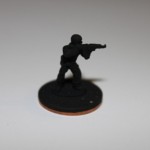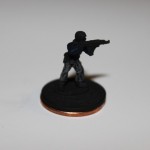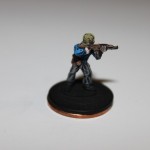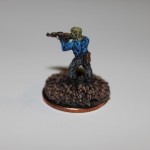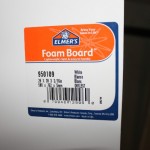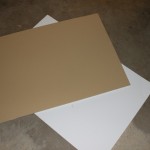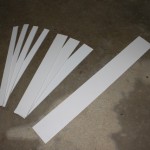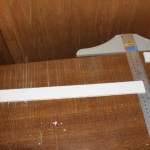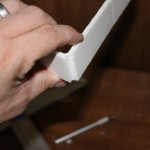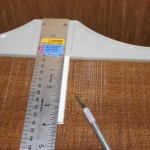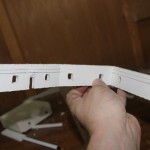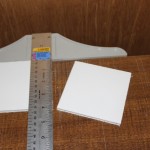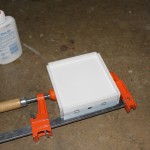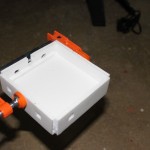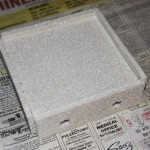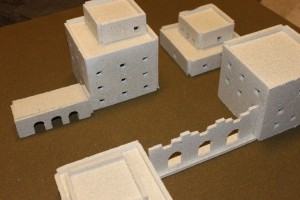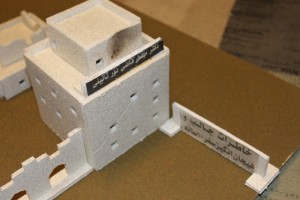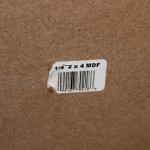technoPHOBE
Heather Costume: Dragons: Race to the Edge
by Steve Struebing on Feb.26, 2019, under Cosplay

The time has finally come for the long-awaited release of How To Train Your Dragon: The Hidden World! Our house has some huge fans of the series due to its gorgeous visuals, endearing characters, and a musical score that soars as high as any Night Fury. Netflix also released a series of original programs called Dragons: Race to the Edge (2015 – 2018) introducing a host of new characters and villains. In the new adventures, we continue to follow Hiccup and Toothless in their quest to keep dragons from the clutches of human trappers. One of our little fans has pulled yours truly into more than one episode’s viewing (understatement). When our oldest gal requested to be Heather this for Halloween, it was time to get some Razorwhip scale armor together to outfit the little lady.
What You Need To Gather
Materials For Building
- Faux Fur (for boot covers)
- Cardboard
- Metallic Aluminum Spray Paint
- Black and White Tempera Paint
- Rope
- Twine / String
- Small Belt (for attaching plated skirt)
- Nuts, bolts/machine screws (8-32 work well), washers
Costume Elements Worn As Is
- Sequin skirt (representing Chain Mail)
- Thick leather belt
- Black wig (long enough to take signature thick braid
- Vest

Armored Skirt: It’s Really A Matter Of Scale
The Razorwhip dragon that Heather rides (Windshear) has a reflective silver scales with frosted highlights and black shadows. Scales of this armor form Heather’s plated skirt in an open fashion to the right, and heavy plating to the left side.

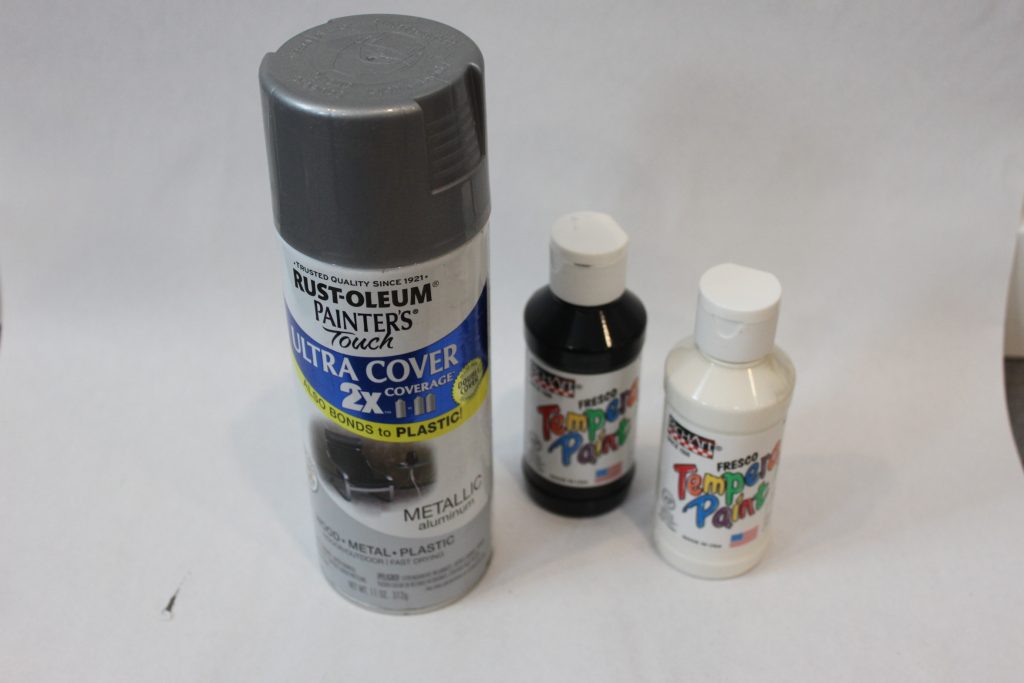

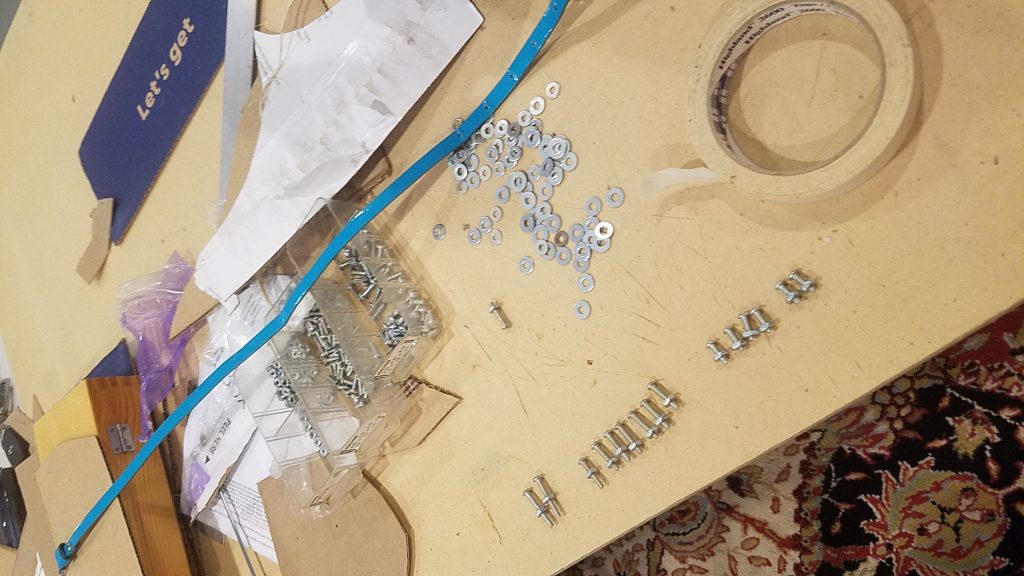

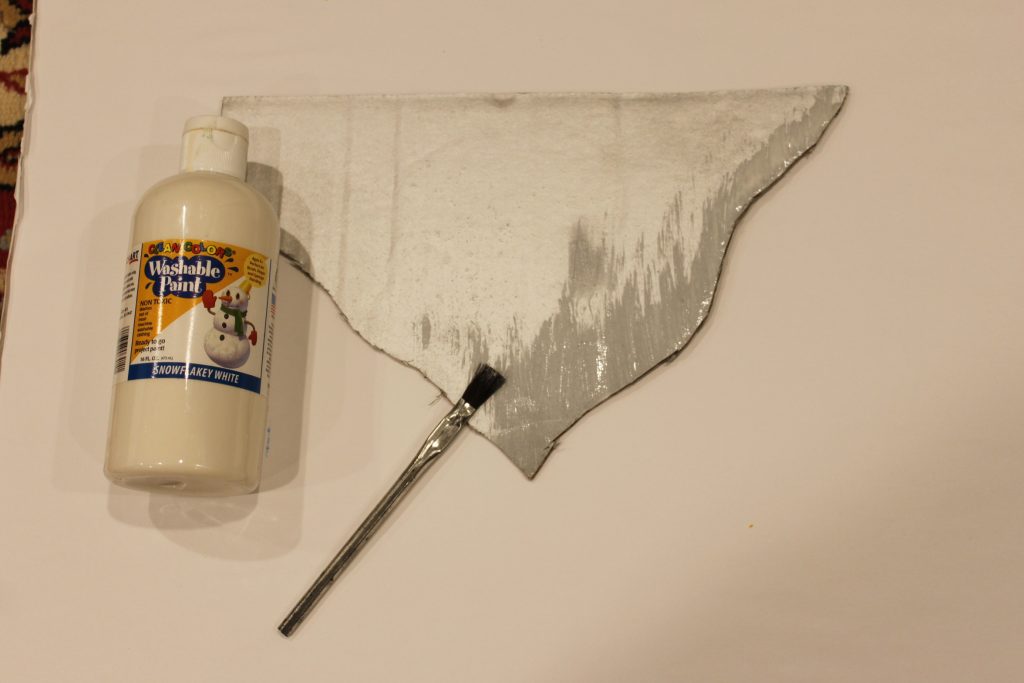
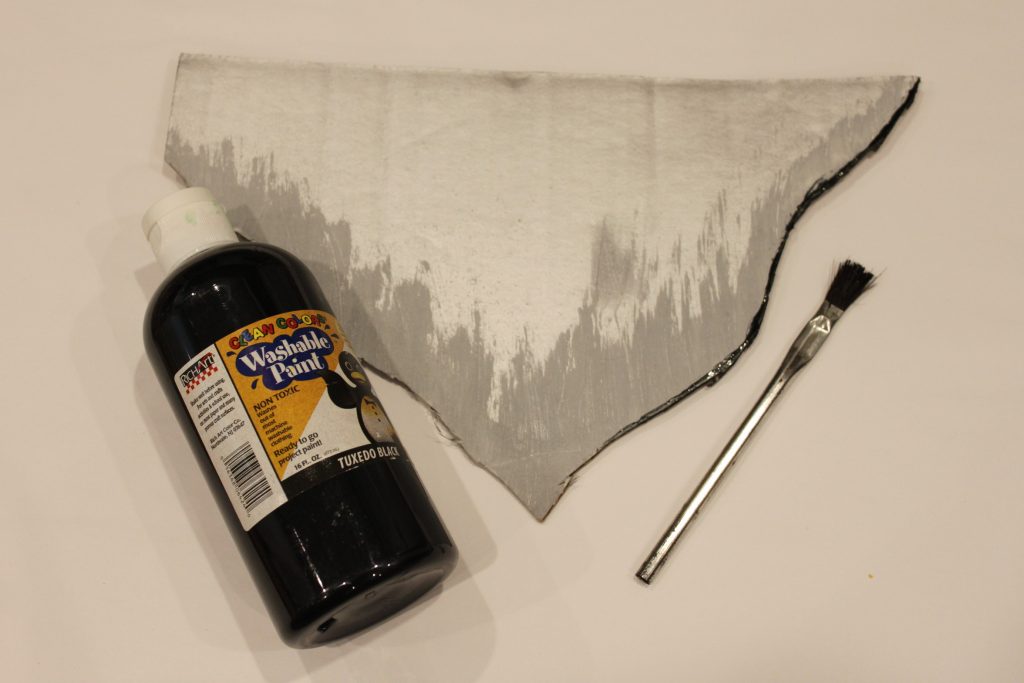

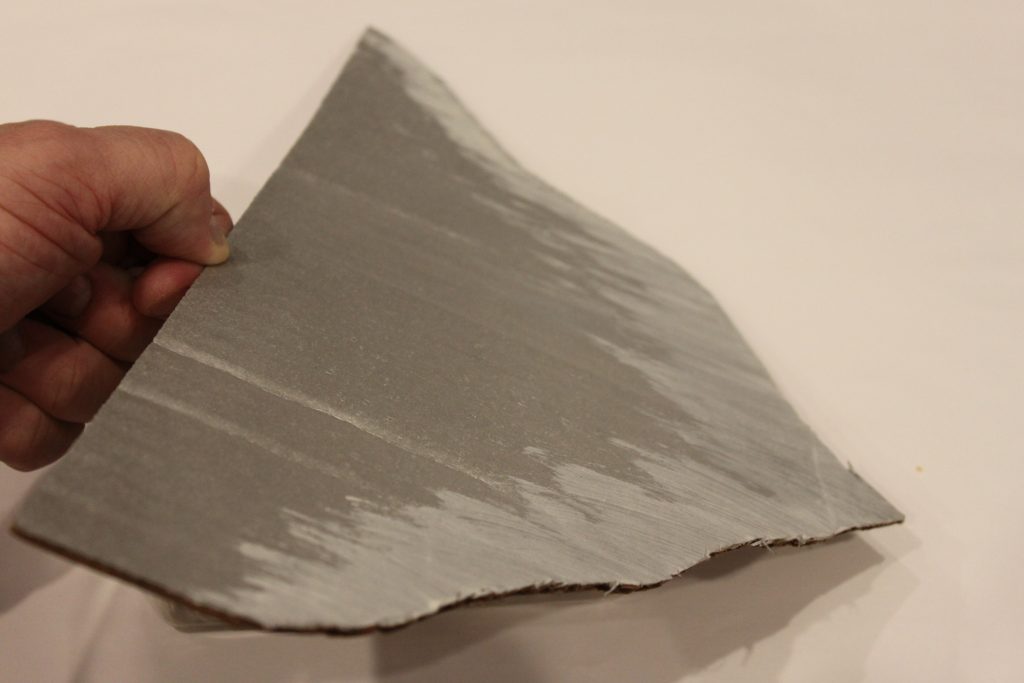

C’est l’armour
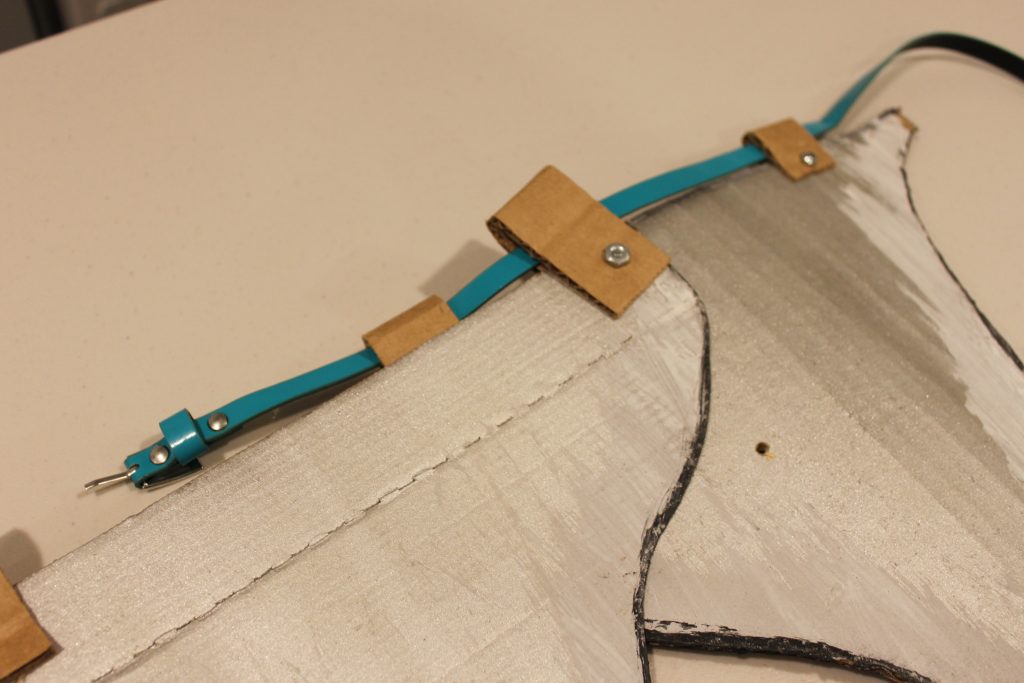

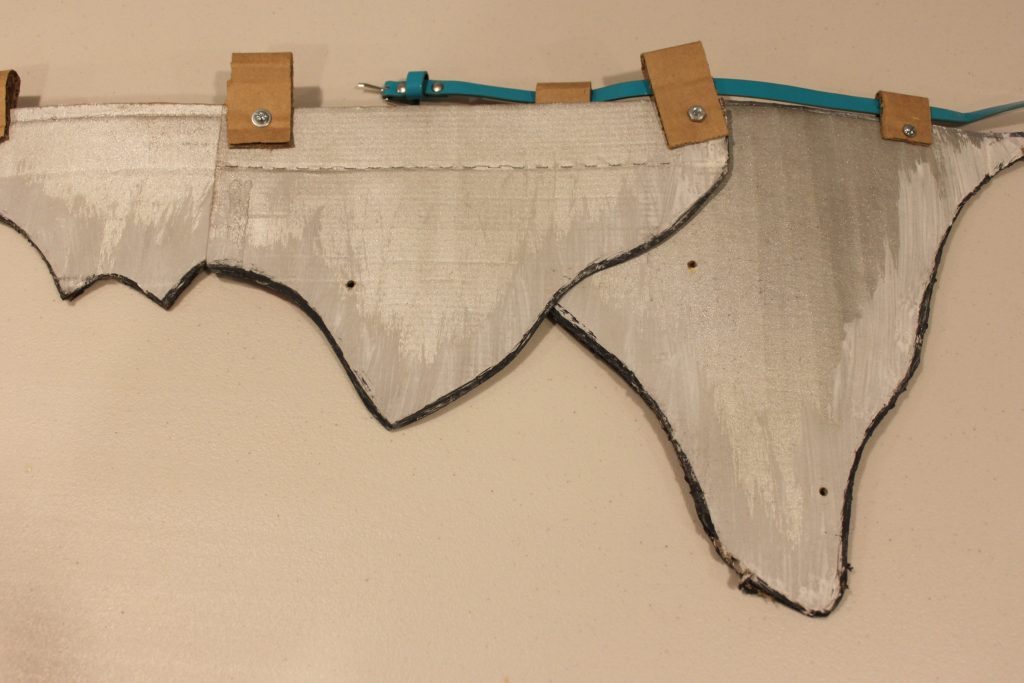

Boots: You’ve Got It Covered
I bought a used faux-fur coat, figuring I would be able to use the faux fur fer somethin’ else too. Cutting along the coat/sleeve seamline gets you 80% to a bootcover, and can serve as the pattern if you needed to do it from scratch. Using a sleeve “stock” did create bunching, so opening the long seam to adjust, or cutting a horizontal slit portion, and removing fabric to clear the bunched material and resewing into an angle for the foot may do the trip. This is up to your level of effort (I opened the seam and adjusted).
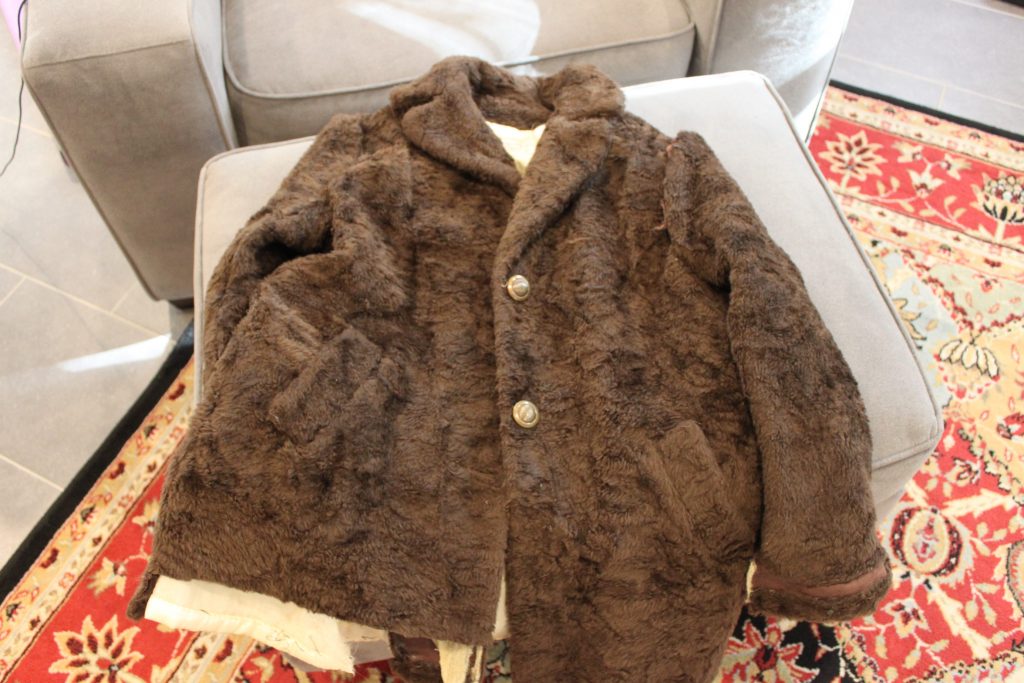



Throwing Down the Gauntlets
To get the gauntlets to flare from wrist to forearm, you need to cut and score in the pattern shown. They should fold to a close, and have a long point that comes from the elbow, while allowing your little Heather to bend her arm. You will also need a small decorative plate that will curve over the main gauntlet and give it depth.



The Shoulder Piece

Heather has a rather distinctive shoulder adornment over her non-hair shoulder.
Cut three long tapering plates that will stack, each smaller with a mostly-similar shape. Apply the same scoring and painting. Hold a small arch in the bottom most plate and apply the next plate over it with a pair of screws, nuts, and washers. The tension of the higher plate will actually hold the curve in place. See how the top plate pinches in and holds the curve.
This will attach by having a small twine loop that ties onto the machine screws and goes around the next.
Heather Up!
Prepare you little dragon rider in her sequined skirt and long sleeved shirt ideally with a little collar to prevent the shoulder-plate string from scratching. Attach and adjust the plated belt. I actually assembled some more plates on the little warrior at this point. Boot covers on and then the shoes go underneath, (of course). The rope is looped around and tucked in the boots. Attach the shoulder plate with a sting looped around her neck. Add the finishing touches.. . vest, and the ever-so-cool braided hair.
There you have it! It was just a couple hours in an afternoon to assemble the costume, and it’s always fun to do some assembly on the most creative holiday of the year, in one tinkerer’s opinion. So, grab your trusty Razorwhip dragon, and have your little one take to the skies as Heather!

Scale: Carbon Atom to Massive Star
by Steve Struebing on May.30, 2011, under technoPHOBE
Though my blog is primarily focused on DIY, I think every once in a while some general information is appropriate because it is central to why even bothering with learning or doing anything…at all.. let alone doing it yourself. While these aren’t the answers to the big questions of where we are from, or what’s it all for, the two links below can instill amazement and appreciation of this universe we are citizens of for a short time.
Nothing new here. We’ve been taught size and scale throughout our lives. Then, when quantities are sufficiently small or large, our perception loses a handle on something to keep it in relative perspective. You take photo of a statue with someone next to it and say “wow, that’s a big statue”. What is 1 x 10^100 vs 10 x 6.022 x 20^23? They are just big numbers. We can talk about them, but lose sight of how big they are. Well, take some time to watch the two following links in succession. Study them and really try to keep their relative sizes in the working store of your mind. Compared to the carbon atom, how big are we humans? Compared to Betelgeuse, what is the amount of atoms we contain?
I showed these two links to my department at work to open a meeting. Some commented on feeling insignificant afterwards, others amazed that they could look up that night and see many of the stars called out (Betelgeuse, Pollux, Aldebaran, Sirius). They all seemed to again reflect on where we fit in the scheme of things.
The universe is a big place. There is a lot out there to try to understand. Why not start here?
Let’s Start Small
http://learn.genetics.utah.edu/content/begin/cells/scale/
Wild Garlic Soup
by Steve Struebing on May.15, 2011, under technoPHOBE
As a kid growing up in Western Pennsylvania, we always seemed to have shoots of a particular weed growing up ahead of the grass in the spring. Obviously being an inquisitive (and foolish?) kid, I would pick it up, and immediately noticed a strong garlic or onion aroma. Not long after, I would nibble on the shoot, and it tasted like chives. Every once in a while as I was idling through the woods, I would pick up a shoot of this wild garlic and nibble on it.
I have since moved to Virginia, and my new lawn has more than its fair share of wild garlic (and acorns). Rather than fight it, I figured I would embrace it and use it for a nice garlic soup!
Harvesting
WARNING: Always positively ID a plant before consumption. There are two varieties of wild plant that look like Wild Garlic or Wild Onion, and are dangerous (Star of Bethlehem, and Death Camas). I did not know this until I did some net research.
I went to my front yard where the garlic was growing in early spring. It grows in little clusters shooting up through the grass.
Preparation
Now that I had a full bag picked in very short order, I selected out the largest of the bulbs (probably not required) for preparation. This consisted of teasing out the grass that had been dug out along with wilted or dried debris. Then the bulbs were washed free of dirt and I cut the stringy beard of the garlic off and removed the outer layer of the bulb. Once the knife hit the garlic, the aromatic part of preparation was in full swing. It was not nearly as strong in scent or eye-watering as cutting through a pile of red onion making salsa, but has a subtle onion odor.
Making the Soup
Now.. I am not a great cook. I am not even a good cook! I have my 3-4 go-to dishes that I am sure my friends and wife are sick of, but that is all I am really comfortable with. I do love soups in the winter, and would like to get better about making it and reheating it for a warm bowl of deliciousness when I want it. I scanned the web for a recipe making vegetable broth. I did not want to use beef or chicken stock because I figured this would overpower the star of the show, our Garlic. I selected some “neutral” ingredients that I thought would work well together.
- Wild Garlic (shocker, I know)
- Water
- Salt
- Pepper
- Bay Leaves
- Carrots
- Mushrooms
- Potatoes
I diced the carrots and cut the potatoes into nice chunks. I brought the water, garlic bulbs, salt, pepper, carrots, and bay leaves to a boil and let them simmer for about 25 minutes. After that, I added the potatoes, mushrooms for another 30 or so minutes. At the end, I threw in a handful of the chopped up garlic shoots for more flavor and texture so as to not soften them too much in a long simmer. Pull out the bay leaves, and we are done!
Bon Appetite!
And with that, a little bay leaf for presentation, and we are ready to enjoy. I think it turned out nicely. I perhaps over-peppered and salted and perhaps not long enough simmering the broth, but there was not a lot of other flavors to compete with the garlic. They were very mild in the soup, and I would have to say it was good enough to have another bowl of, and another a couple days later. The garlic is versatile and people comment on throwing it in salads, on top of fresh tomatoes and mozzarella, or other foods. It’s not good enough to crack into the standard 4 meals I prepare, but it’s good to get outside of the comfort zone, and like the acorn flour, enjoy something from the grocery store feet from my house.
Miniature Wargaming Series- 4 Painting the Marines
by Steve Struebing on Sep.24, 2010, under technoPHOBE
This will be the final installment of my Miniature Wargaming Series. Again, we are covering the Ambush Alley rules system, with minis purchased from RebelMinis. I hope you’ve been able to learn that it is possible to not have to anguish over the last meticulous detail to field a squad or ten. In 15mm I would not go so far to say quantity over quality, but close. For those who have been following along, we’ve made our board, we’ve built our sprawling metropolis, populated it with some ill tempered insurgents with frickin’ laser beams on their foreheads, and now its time for our Marines. We’re good to go…
The Paints List:
- Olive Green
- Medium Gray
- Spanish Olive
- Camel
- Desert Sand
- Black
- Twill
- Acorn Brown
- Medium Flesh
The 50/50 mix is simple. Just blend 50% Olive Green with 50% Medium Gray. Swirl them together and drybrush. This is your basecoat color.
For step 4, you will be using Spanish Olive for the first coverage of camo “dots”. Cover about 50% of the mini. Don’t stress over precision.
Paint the boots solidly in Camel color.
Cover the backpack in Camel. Use top down drybrushing to show some highlighting. For Step 9, you will use the Medium Gray to drybrush the gun and bring out some of the details against he all black primer.
In step 10, take the basecoat mix (50/50 Olive Green and Medium Gray) and mix it with 50% twill. This will result in 50% twill, 25% Olive Green, 25% Medium Gray. Use this to dot as you see fit.
For drybrushing the hands, remember to go against the features to ensure there is a gap for the individual fingers to show. Use VERY LITTLE paint, and just keep going over it. Too much paint and you’ve lost your natural shadows where the primer shows through.
Apply two small black dots for the goggle surfaces. Place your white glue down. Apply evenly with small coffee stirrer, or the like.
Base: As in the previous post, use black glass-like gravel found in Craft/Hobby store (Michaels). Once the base of Acorn Brown has been applied, it will form a nice base coat.
Final step! Take your Desert Sand and highlight the base texture with very light drybrushing.
And there you have it! I hope you give boardgames and wargames a try. This truly is an opportunity to have an old fashioned good time without the need to plug anything in or even know what “log on” means. It is fun, engages the imagination, and hones the skill of detail orientation and making something with your hands. Drop me a line and let me know how your painting goes. Also, if you have a great technique you use, let me know. I am always interested in other people’s hard-learned simple techniques. See you at the table, my friends….
Miniature Wargaming Series- 3 Painting the Insurgents
by Steve Struebing on Aug.27, 2010, under technoPHOBE
Welcome to the third installment of our wargaming series (focusing on Ambush Alley). Just a note before I begin about 15mm miniatures. There are tons of people out there who can make stunning, photo-realistic, perfect minis even at 15mm. 28mm minis can show a lot of detail and painting errors on the table top. However, 15mm minis are more forgiving (and are less expensive to get lots of figures out there). The world is zoomed out just a bit more in that scale. A perfectly painted table top is ALWAYS better, but I don’t have that kind of skill, so this is about how to get that pack of shimmering lead-free lead on the table and made “field grade”, as I call it (as opposed to “demo grade”). It’s not perfect, but at a glance, its good enough.
Miniatures Source:
The minis I am using here are from Rebel Minis. This is where I have also purchased my Regulars troops (the good guys).
Tools/Techniques:
The primary technique used is called “drybrushing”. The intent is that you lightly brush on a LITTLE BIT of paint onto the high areas as the light would naturally fall on the higher regions of the model. Google “Drybrushing” or watch youtube. There are probably 1000 videos out there to get you started. The rule: dip your brush, and brush away virtually ALL of the paint. Then start lightly feathering on the paint across the grain of the high regions. If there are vertical bars raised, brush horizontal, for example.
3 colors of depth look really good, but I use 2 plus the black primer. The trick is using progressively less paint and lighter colors as you move up to the highest surfaces of the mini. Also, the rule is work from the inside out when painting the mini.
You’ll need
- Fairly fine paint brush
- Fine black stone (craft store. Looks almost like ground up volcanic glass)
- Black spray primer (hobby store)
- Penny (for the miniature base)
- Elmer’s glue for the mini/penny
- Minis
- Assortment of acrylic paint (get it at any craft store)
- Spray sealer (hobby store)
Here is the full assortment of paint I used for this mini:
- Pure White
- Black
- Dusty Khaki
- Ocean Blue
- Blue
- Medium Gray
- Quaker Gray
- Medium Flesh
- Acorn Brown (oops, didn’t make it into the picture)
Mini Prep
Cut away any of that extra metal hanging off the mini that is a result of the casting process. That crap is called flash. Next glue the mini onto the center of your penny. After the glue has dried, use your black primer. A couple coats sparingly, but cover fully.
Completing the Miniature Base
A little bit of work really goes a long way towards the overall look of the miniature. It gives the figure a real world look, and sets up a nice contrast for the rest of the mini detail. I’ve chosen fine black stone, and will dry brush 2 “sand” types of colors over the top.
Completed Figure

Paint black around penny edge, yellow to mark him as a "leader" in the game, and seal the mini. Done.
And there we have it. You can use all different mixes of pants and shirts colors. Mine are a good mix. Also, the minis are good to do in batches because you can be working on the next mini as one dries. It’s kind of a like an assembly line where you do all the same parts that are the same colors at once. You’ll have your baddies on the table in no time! Good luck!
Miniature Wargaming Series- 2 Making Terrain
by Steve Struebing on Aug.21, 2010, under technoPHOBE
In the last post, we got a simple sense of what this whole wargaming thing is, and have our own 2 feet solidly beneath us (for those paying attention, its a 2 feet by 2 feet board). Now, lets get on to arguably the most fun part of the whole deal: Making Terrain.
As I mentioned in the last article, my grandfathers were great at modeling life in miniature. This is the appeal of meticulously detailed model railroads. While non static, once they are set up they are set up. This is where wargaming is set apart. You can reconfigure, and use the terrain to play a game. Well, let’s get cracking here. We have a city to build.
Foam Board Selection
The first step is foam board for building our houses. Pick it up at local craft store. Lots of colors available, but brown, tan, black, and white are probably the best for you (depending on the region you want to model for your wargaming).
Cutting Foam and Scale of Minis
First, a note on scale. I am sure that it’s well posted somewhere, and there are lengthy dissertations on the matter, but I homegrew scale. First, I took a look at an upright standing 15mm miniature, and he measures approximately 3/4 of an inch. If an average man is 6 feet tall for these purposes, then its 2 feet per 1/4 inch. Thus, for a one story building at 10 feet per story, it should be 1 1/4 inches per story.
Prescribed Cutting Widths:
- 1 1/4 inches (for the reason noted above. For 1 story buildings.)
- 2 1/2 inches (for 2 story buildings)
- 4 inches (for roofs for buildings that are 4 inches long and wide)
A bandsaw is simply magic for cutting foamboard. It is loud as hell indoors, so wear ear protection, but it cuts perfectly every time.
Measuring, Cutting, and Scoring the Foam
In this example, we are going to walk through the creation of a 4 inch square, one story building.
- T-Square
- X-Acto Knife
- Cutting Surface
- Measuring device (ruler, whatever)
Take one of your 1 1/4 inch strips and for the FIRST measurement, mark 4 inches, plus 3/16 inch. This little extra is to account for the thickness of the cardboard when you fold your box so it will be perfectly square. This only has to be done for the first wall, because the additional 3/16 inch will glue to the opposite wall (covered later). Just remember the 3/16 inch for the thickness of the foam. You’ve got to account for it in several places.
Now the scoring bit. This is to cut through the outer layer of paper and a bit of foam so you can bend it at an angle. DO NOT CUT ALL THE WAY THROUGH!
Test Fit and Cutting Windows/Doors
We’re starting to get somewhere now! Ok, next just do a fest fit to make sure the corners are square, and you’ll see how the extra 3/16 inch lip fits against the edge of the wall flushly. For windows, I have a little square stencil I use to draw squares and rectangles. For windows, put their center about 1/3 up the wall, not at the midpoint. If you cut them into the midpoint, you will see the roof supports through the window, which is unsightly. How DARE you. You could opaque the windows with some tissue paper in the back, but I am not that hardcore. Just use the damn 1/3 up rule, will ya?
Next cut out the windows and door carefully with your X-Acto knife.
Becoming a Roofer/Closing the Deal
We’re now at the place where we are going to be prepping the roof supports. Its nice to have a slightly recessed roof so the minis look like they are down on it, and its nice when you stack other buildings on top. I recess it about 1/4 inch. First, we cut roof supports. These are thin strips that are 4 inches in length or less for this house. They obviously can’t be longer than a wall because the house won’t fold into a square otherwise.
Now, mark your lines for where the stips will go. 1/4 down from the top for the recession, 3/16 to account for the width of the roof, and another 3/16 for the width of the roof supports. I glue them in edge on.
Now, we cut a 4inch x 4 inch roof off our other strip, apply glue to the roof supports, and let it dry. We are almost all done now.
Home Sweet Home
Now, we’ll put the roof on, and admire the handywork as it dries.
All built and dried it should look like this and be ready to remove from the clamp.
Texture, I didn’t even know her…
Now we apply a textured spray paint to give the house a stone look and feel.
Home on the Range, building your town.
Well, you’ve done it. You’ve build your first building. Now, you can vary number of stories, width, etc., using the same technique. I really primarily rely on 4 inch, and 2 1/2 inch square buildings. They stack well, and can create a nice little town. Enjoy the tour…
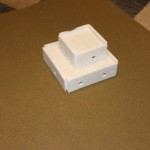
Oh wait? The STACK? This is a 2 1/2 inch square on top. You'll also use the 2 1/2 to roof. It's a good system!
Going into Mass Production, and Building The Metropolis
Build, build, build. Get creative with walls, decorations, and stuff lying around the house.
Accessorize for Realism
I don’t know a lick of Farsi, so I went to my favorite neighborhood kebab place and got a regional newspaper to make signs. The Kebab e-Kubideh was also delicious. The generally have them there. Look in the advertisements and cut some out for signage.
Finishing Touches
I grabbed some blocks from a craft store, grabbed some scale cars (N-scale, I think?!!) and have a nice little town where trouble’s-a-brewin. Happy Hunting!

Looks like a delivery for ol' Polymythic. I hope its some chow. It's been a long day building a city from nothing..
I hope this shows you it really is not hard to get going. Your creativity will take you a long way. Look around the craft store. Imagine some of the things you’re about to throw away spraypainted black. If the shape is interesting, you can probably use it. I’m looking forward to taking a virtual tour of your tiny ‘ville sometime soon. In the next post we’ll paint up some baddies to introduce a little turmoil to our currently placid burg.
4/17/2012 Note: Found another blog whose stuff is just too good not to link in.

The lights are much brighter there, you can forget all your troubles, forget all your cares, and go DOWNTOWN!
Miniature Wargaming Series- 1 Building the Board
by Steve Struebing on Aug.21, 2010, under technoPHOBE
This will be a slight divergence from technologies vs. anti-technology type projects. I have been an avid player of games for a long time. Perhaps not everyone is aware, but there has been an renaissance of boardgames while the American boardgame market has been fairly dominated by “old favorites” like Monopoly, Stratego, Risk, and others. Not making a judgement here, I do love me some Stratego.
The world of “gaming” is a wide one. The strongest of my callings in terms of hobbies is non-video games (ok, so this CAN qualify as a technophobe post). As a kid we would play Parcheesi as a family. My father never seemed to get the perils of creating roadblocks in that game! When the power went out and candles were lit, we could still play. There was something simple and grounding in that. This is not a boardgaming article, but I simply cannot avoid asking you, the reader, to give some Eurogames (as they are called because of the style of game originating in Germany) a shot. Settlers of Catan, Carcassonne, Pandemic, Ticket to Ride. All are simply fun, challenging, and addicting.
This 4-part series is about a style of game called the “Wargame”. I am not going to dig into the history, but the famous H.G. Wells would play these little games with his sons calling them “Little Wars”. From those humble and imaginative beginnings sprung the miniatures wargame. I have many, but I want to call attention to the one I have invested time into recently. It is a modern-combat (Call of Duty: Modern Warfare 2, anyone?) game of squad level combat titled Ambush Alley.
I will cover the following in this series:
- Building the Board
- Making Terrain
- Painting The Insurgents
- Painting the Marines
My grandfathers were hobbyists and builders. One a model railroad builder, the other making RC planes and small buildings. I truly wish I could have grown up faster, or had them live longer and seen who I am today. We would have had much in common (unsurprisingly, because they consciously or unconsciously set me on this path). We could have built things together. They could have been aware of the impact they had on me, a little boy amazed at their detailed and beautiful craft.
Let’s Start Simple – Building the Board
Battlegrounds can’t happen without the ground, of course, so let’s whip this up. This ain’t brain surgery, but lays the foundation..
This game is interesting in that it is played on a nice small 2×2 foot board, rather than the more typical 4×8 foot boards. The game is played with 15mm miniatures. As a thumbnail, movement is done by tape measure, combat resolved by dice, etc.
Materials:
- 2×4 Thin MDF Board (Lowe’s, HD)
- Railroad Grass Roll (Hobby Store)
- Glue (come on, buddy!)
Go to your local Lowe’s or Home Depot, and get a 2×4 sheet of MDF. Ask them to cut it right down the middle, or do it yourself.
As I said, this is super simple. Don’t fall asleep on me, now we can start the good stuff.
Making Acorn Flour and Muffins
by Steve Struebing on Dec.14, 2009, under technoPHOBE
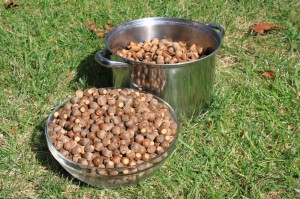
Acorns from my Oak out front
I am trying to recall the exact moment when I set my mind to making food from acorns. It could have been any of the following moments:
a) When reading “When Technology Fails” I wanted to take a stab at more self-sufficiency
b) When I listened to “Everybody Dance Now” I was inspired by “I’m just a squirrel tryin’ to get a nut”
c) When I moved to into my new house this summer, I saw the MASSIVE oak out front and knew the acorns were coming

Oak tree - the acorn donor

Oak leaf
Whatever planted the seed, it was obvious that I needed to make acorn flour. Apparently, acorn flour was a food that was made by native peoples (I have since confirmed reading some blogs of families of Native American descent who used to hoard massive amounts of acorns for making food).
The first step was harvesting the acorns. At the beginning it was not terribly easy as I stalked the yard (to the bewilderment of my new neighbors who must have thought me out of my mind… or rather, having “gone nuts”) looking for an acorn that had not fallen far from the tree. It became increasingly easy as the season wore on and by the end of fall, I was kicking myself for trying so hard at the beginning of fall where by the end I could, and did, rake bags full of the stuff. Ah well, you live you learn.

Acorns lying in the front yard

Not just for squirrels anymore
After having gathered what I considered a reasonable amount, the next step was removing the acorn top cupule. No, I did not know that word before I looked it up. Feel free to use it in scrabble for 10 points. That was easy enough for the “early season” acorns, and virtually did the job by itself for the late season ones.
Next was going through the stash and finding any acorns that showed evidence of rot, or worms.

Damaged acorn
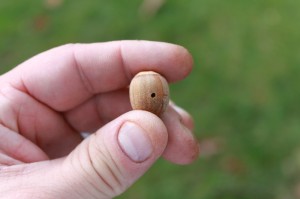
Telltale sign of worm presence
Next, and certainly the most fun (please note sarcasm) part of the process was shelling. I tried just using my hands, then a few with teeth, and finally settled on a set of adjustable pliers the perfect width to apply enough pressure just to crack the shell when closed. It was a slow and tedious process of cracking and peeling the somtimes stubborn shell from the nutmeat. Many a football Sunday was spent watching a game and shelling acorns. Yeah its weird, but damnit I was determined. When it was all said an done, the shelled acorns gave off a sweet, nutty, almost bourbon scent.

Unshelled, shelled, and acorn shells
So before you just run off and throw a handfull of shelled acorns into your mouth and consider yourself educated, there is something you should know about acorns. Apparently they are very high in tannic acid. This is not good for your system (I have read somewhere that even animals may wait for rains to rinse the tannins). Take a small nibble of an acorn and you will feel that rough acidic bitterness that will turn you off from said handfull. The proces of removing this water-soluble acid from the nutmeat is called leaching. I effectively chopped the acorns into smaller bits to increase the surface area and allowed the water to do its work.
The water browned significantly the first morning, so I changed the water. Then the first night, so I changed the water. Then day 2 morning and night so I changed the water. Then day 3…then day 4… you get the point. 2 water changes for over 2 1/2 weeks. After that time, I tasted the acorn and there was very little residual acidicy, so it was onto the drying phase. I have read its possible to to leach by putting a pillowcase of acorns in stream for a while to do this, or in extreme cases, put them in the upper tank (I repeat, UPPER TANK) of a toilet because the water is clean and changes regularly. I didn’t do this.

Water browned from tannis being leached out
The nutmeat was spread evenly onto a baking pan and I forced my wife to make pizza so I could use the “leftover” heat to dry the acorns. I think they were left in for too long as is evidenced through significany browning. They were almost a coffee roast, but smelled good.
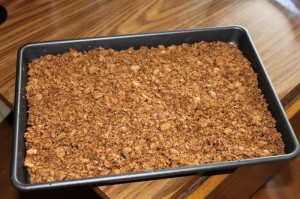
Wet acorn nutmeat before drying
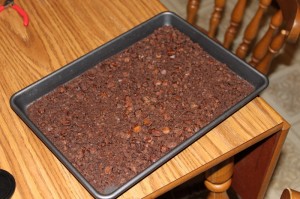
Oven-dried (and roasted) acorns
Ever the purist, I went the motar and pestle route to mill them. (Footnote: This inspired me to read about millstones, which are more fascinating than you think. Take a quick read about the patterns millstones cut with and how they are dressed. I thought they just pulverized, which they do not). After a laborious while, I had made a small bit of flour. Losing steam, I went to my coffee burr grinder and made quick work of the rest, grinding into a fine flour.

Milling the hard way - Mortar and Pestle

After milling the easy, and non-purist, way. Boo technoPhiles!
The last step was to make something edible. The flour tasted fine by itself. Somewhat bland
but with a nice nutty finish. My wife was kind enough to look up a “Traditional Acorn Flour” recipe for Acorn Muffins.
They turned out very dark and after a first taste they were…shall we say….harsh. It didn’t matter and I stubbornly gagged down the muffin, grinning in my self-sufficiency. The recipe did not call for butter nor sugar. I quickly topped them with sugar and ate one with butter. It was much better that way.

Sugar-topped acorn muffin
Nutrition Facts (from http://www.elook.org/nutrition/nuts/3218.html)
Serving Size: (100 grams)
Amount Per Serving
Calories: 501
% Daily Value*
Total Fat 30g 46%
Saturated Fat 4g 19%
Cholesterol 0mg 0%
Sodium 0mg 0%
Total Carboydrates 55g 18%
Dietary Fiber 0g ~
Sugars 0g ~
Protein 7g 14%
Vitamin A 1% Vitamin C 0%
Iron 6% Calcium 4%
So, my technoPhobe friends, this was a fine day. I have never really been a gardener or worked on a farm. I like most Americans get my food from the store. This was about finding a small amount of nutrition raining down in my front yard. It was more time and effort than I was expecting, but its encouraging to think that if I had to, I could survive a couple days by spending a bit of time under an oak. All the better if its mine…
Tabletop Trebuchet
by Steve Struebing on Feb.11, 2009, under technoPHOBE
Tabletop Trebuchet
The trebuchet was a siege weapon with an interesting and complex history. Where some weapons employed torsion of ropes or sinews (such as the ballista, catapult, onager, espringal, etc) the trebuchet was a great advance as it used a massive counterweight to store the potential energy. Nowadays, these machines are used to throw pumpkins, cars, or just about anything. They are also the objects of much analysis for people trying to understand physics. This is an interesting and efficient throwing machine, so I had to build one. It has even recently been featured on Make.
While there are many kits out there and “right ways to build” a trebuchet, I wanted to simply go on illustrations from a book I had received for Christmas. Reverse Engineering, old school.

Armed with the tools of the trade, a book on the subject, and some time,it was time for a build.
Here is the workspace in my basement. The trebuchet was to be built from scratch using balsa, basswood, and some dowel rods.

Built base. Notched 6 positions for frames using X-Acto knife. Also note lateral stabilizing arms.
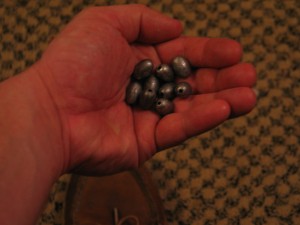
Counterweights- fishing sinkers
Building the Basket
This was one of the more “complex” parts of the build. The basket had specific shape requirements to keep the basket from flipping over, and had to hold a good amound of weight relative to the build material (balsa). Lastly, it could not dump the lead weight as it accelerated downwards.

Basket parts and throwing arm pre-assembly
The two basket sides and the basswood throwing arm. Also 4 dowel rods are used to give additional support under the lead sinkers used as counterweight mass.

Built basket and arm.
Almost fully built basket. Need to add planking to the base so the lead won’t fall out. Also need some washers on the sides of the arm to minimize friction loss. The dowel pegs do add quite a bit of strength and stability.
Building the Frame
This was very derivative off what I saw the in my Ancient and Medeival Siege Weapons book. Its a rather simple A frame with some additional supports, but I added 2 basswood squares to stabilize the frame and give the throwing arm axle something firm to rotate through.

Build stand and throwing track.
The built up frame. Also note the flat track for the sling and projectile to slide with minimal friction as it accelerates. Here you can see the angled braces keeping the frame up (that were coming out of the sides of the base).

Sling release. This is a small dowel peg at the end of the throwing arm where one end of the sling is tied, and the other is looped over the peg to slide off at the proper point.
Detail of the sling. I screwed a small brass eyelet here to tie one end of the sling string to. The other has a simple tied loop, and is able to slide off as the sling angles around the throwing arm.

Illustration of the frame, and the book image used as the subject of some reverse engineering.
Take a look at the illustration. See any similarities? Ah, yes. The hamster wheels are missing. Those were used for men to wheel the heavy arm back down, and the counterweight back up. Real hamsters would be appropriate at this scale.
Ready, Aim, Fire

Trebuchet in resting (vertical) position. The counterweight is directly below the throwing arm at its lowest energy.

Trebuchet in loaded position. I am holding the sling with my left hand.
Conclusion
I really don’t know when I became interested in this neat little machine. I had stumbled upon The Grey Company’s Site, and their trials to build this class of tabletop trebs called “Cheese Chuckers”. There are sophisticated software packages that will allow you to run simulations to optimize your machine. Whether you want to build one to throw a car, or as I did, one to roll a die in a room at least 30 feet long, you can rest assured that your home is safer with one of these siege engines standing guard.
Weaving a Quiver
by Steve Struebing on Dec.20, 2008, under technoPHOBE
Why Weave?
So you may rightly be asking yourself “What in this dude’s right mind does he want to have to do with weaving? Doesn’t he have anything better to do?”. A fair question. However, let me take a moment to defend myself. Really the catalyst of all this, and a lot of the technoPhobe content, stems from a random meeting at a bar. I had just finished the longbow project, and was in Wolfboro Tavern in New Hampshire enjoying some drinks with my stepfather. Somehow we got to talking to a guy next to us who was ravenously attacking a plate of wings like he had never eaten before.
“Wifes a vegeterian. She’s out of town, so this is one of the few shots I get unless I am teaching class.” , he says.
Inquisitively I ask “Class?” What do you teach?”
“Primitive survival skills.”, he adds as another defleshed wing bone hits the plate.
Needless to say, I had many other questions for him. We talked about longbows, firebuilding, etc. Before he rolled out for the night, he turned me onto this book “Caveman Chemistry” (author Kevin M. Dunn. A great book I may add now from experience. I have bought 4 copies for friends). There is a chapter on spinning yarn, and hence my desire to be able to spin, and weave, something of purpose. Spinning I will cover later.
The Loom
The first step is to buy (or build from Construx) a loom. Next, you have to “warp the loom”. This is done by running yarn lengthwise on the loom. By alternating direction in a figure 8 type fashion, you can create what is called a “natural shed” against the loom. No need to bore you with details.

Loom built of Construx
As mentioned, warping yarns are the long yarns that run the length of the loom (in our case, this could change depending on the loom). The weft yarns to back and forth.
There are all kinds of interesting patterns that you can make by changing the pattern of which warp yarns you go over and under. Alternating each (over, under, over, under) is called a “linen weave”. (Here in this illustration, + is over the warp, -is under.
+ – + – + – + – + – + – + – + – + – + – + – +
– + – + – + – + – + – + – + – + – + – + – + –
+ – + – + – + – + – + – + – + – + – + – + – +
– + – + – + – + – + – + – + – + – + – + – + –
Another example is the twill weave (under, over, over, under, over, over). Note the diagonal bands taking shape in the twill.
– – + – – + – – + – – + – – + – – + – – + – – +
+ – – + – – + – – + – – + – – + – -+ – – + – – +
– – + – – + – – + – – + – – + – – + – – + – – + –
+ – – + – – + – – + – – + – – + – – + – – + – – +

Here the shed stick is opening the "natural shed"
As a kid, you may have had a loom and used a needle or shuttle to go over and under the warp yarns. Well, obviously a better system existed. Using a device, you can mechanically raise the odd and even warp yarns, and just shoot the shuttle down the gap (known as the shed). The one raising the “natural shed” (the yarns naturally raised by the loom) is called the “shed stick”.

Here the "heddling stick" raises the alternate warp yarns opposite the natural shed.
The implement that raises the alternative warp yarns is called the “heddling stick”. There are also looms (one of which I will no doubt build as I have acquired the wood for it) which achieve the heddling action as a function of the loom itself. This is called a “rigid heddle loom”.

Using a fork in a whipping movement to compress the weft yarn
So by simply alternating raising the natural shed, running the shuttle down, raising the heddling stick, bringing the shuttle back (rinse and repeat), you achieve this linen weave. Each couple of rows we would use a fork to tighten the weave.
Here are some additional shots showing cleverness from my technoPhobe cohort in finishing the seam with a needle, working the leather base, and finishing the product.
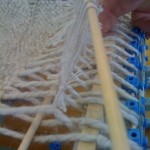
Detail of the opened shed

Almost 50%
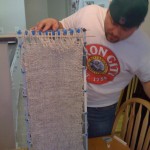
Finally done. This needs to be automated.

Sewing the seam

Borrowing the innovation of a needle

Finished at last
Note the leather guard at the opening to prevent damage, and the leather base that my friend made very successfully.
Now, all I need are some arrows, and I can live off the land. Provided the land has an XBox 360, and a power supply.




